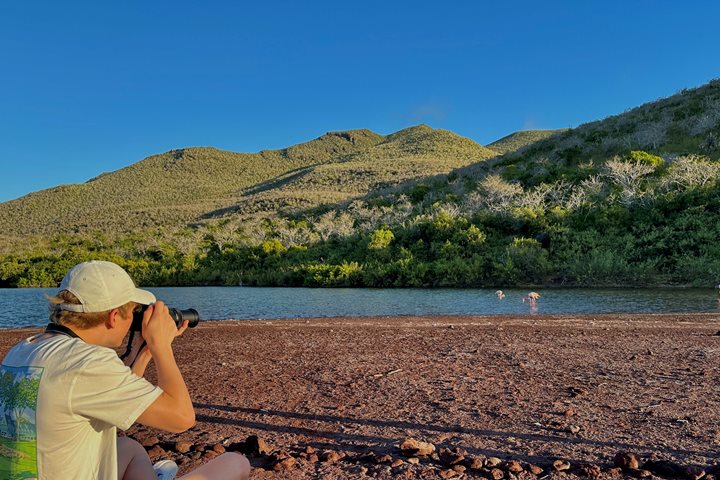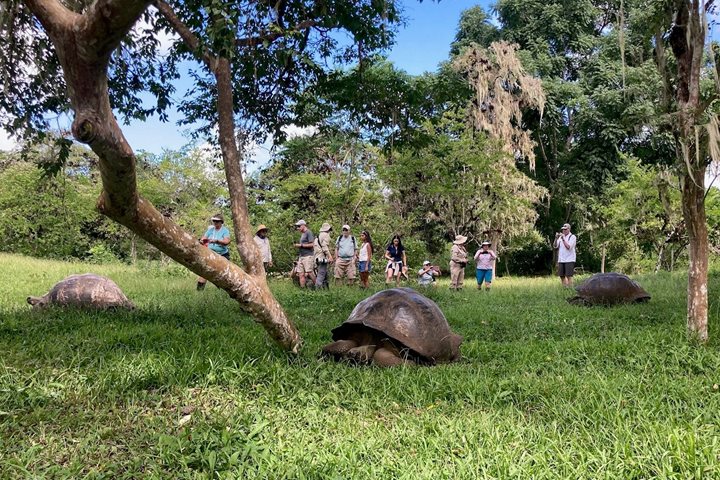Located at the center of the archipelago, North Seymour and Rábida Islands are truly spectacular. Both islands are relatively small, but unique attractions make them excellent places to visit. The islands offer a wide variety of species of sea and land birds, sea lions and, of course, excellent snorkeling sites.
With great weather and completely calm seas, we headed toward North Seymour early in the morning. From a distance, we appreciated the island’s unique flat topography, created by an uplifting of the ocean floor that revealed cliffs everywhere. We walked along a path covered by deciduous vegetation, such as palo santo and muyuyu trees. Inland, we found the first colony of magnificent frigatebirds perched on the tops of trees and some bushes. Some were hatching an egg. Others, like the males, tried to conquer a mate that was flying over the area. These birds produced an unmistakable sound, beating their wings vertically and swinging their heads from side to side. We also observed many juvenile frigatebirds and other chicks eagerly waiting for their parents to feed them. On the rocky ground below, male blue-footed boobies courted the females, dancing and spreading their legs, then opening their wings and pointing their beaks to the sky while whistling and waiting for a mate. What an impressive and unique show! Our guests were delighted to the point that we stayed for several minutes, appreciating the signs of love between these beautiful creatures.
About several meters into a palo santo forest, we found land iguanas resting placidly on the rocks after feeding on cacti or some other succulent plant.
At 10:30 AM, National Geographic Islander started to navigate northwest, bound for the island of Rábida. After a calm navigation, we dropped anchor and began landing on a beach that looked completely red due to a high concentration of iron, oxidized by the saline environment. Sea lions slept soundly, unaffected by our presence. Our guests enjoyed the calm waters of Rábida Bay by swimming and snorkeling. Some guests spotted a huge school of sardines. In the deepest part of the bay, guests observed an even larger school of black-striped salemas. The schools of fish were so large that, from the surface, they resembled an immense underwater rock. The highlight was probably a male sea lion who constantly barked as he swam very close to us.
Finally, our guests returned to the ship to prepare for kayaking along the calm waters of the island. Some guests elected to disembark on the beach and photograph the pelicans and blue-footed boobies that dove close to the shore in a feeding frenzy. In the sky, frigatebirds waited to stalk the birds and steal their food. We returned to the ship as the last rays of sun faded. We were tired but happy to have finished a magnificent day on the beautiful Galapagos Islands.







